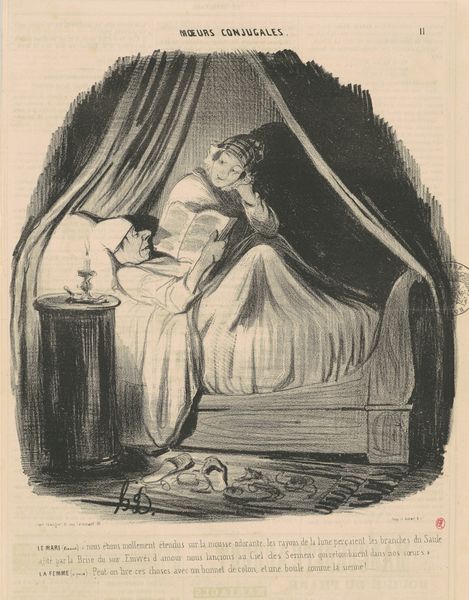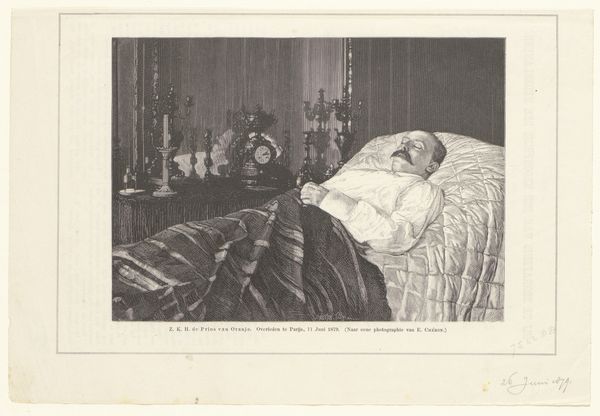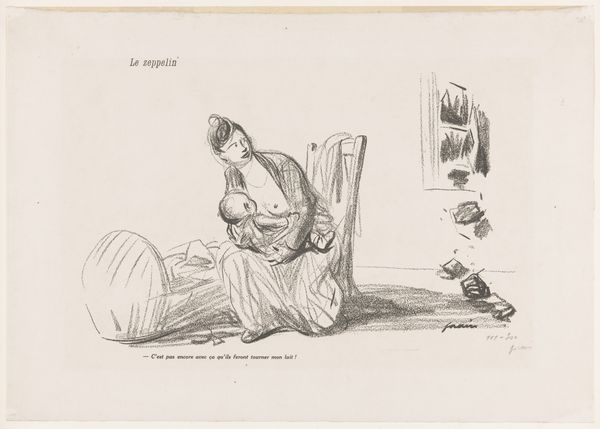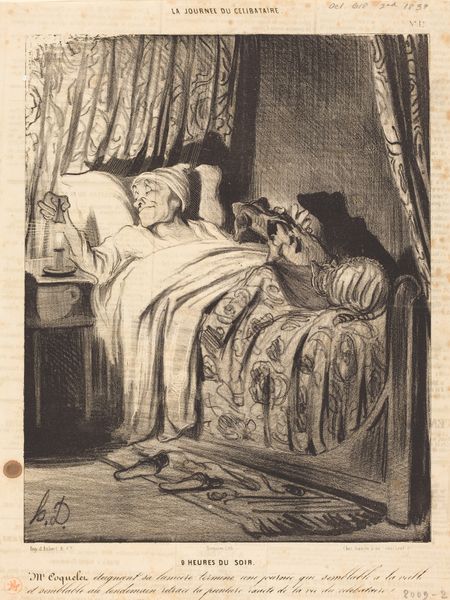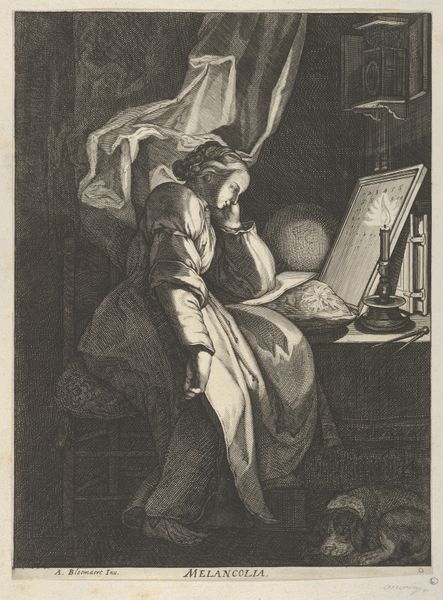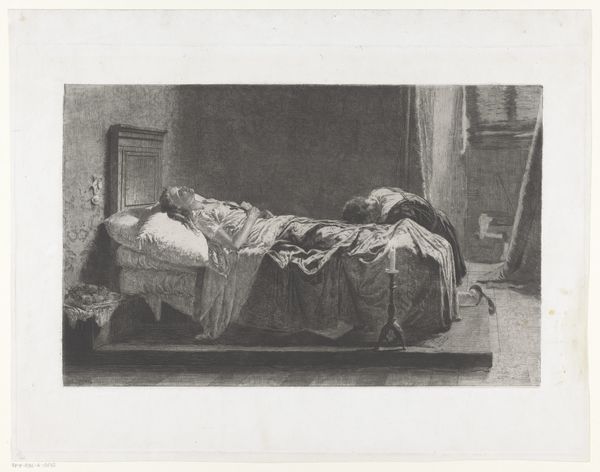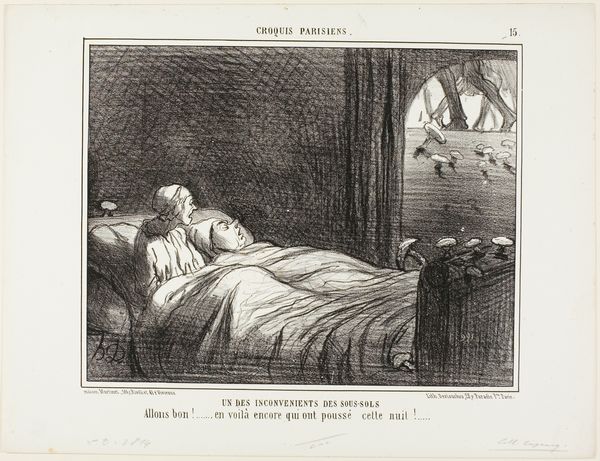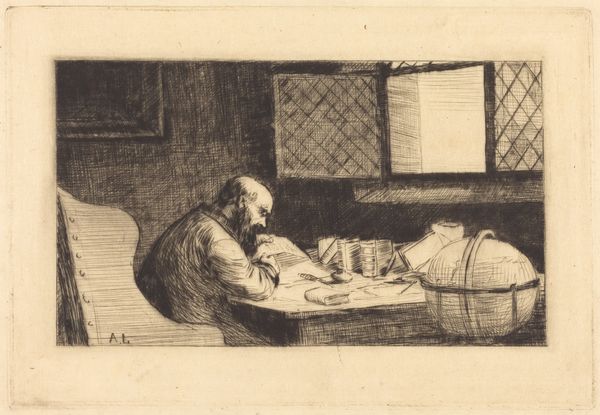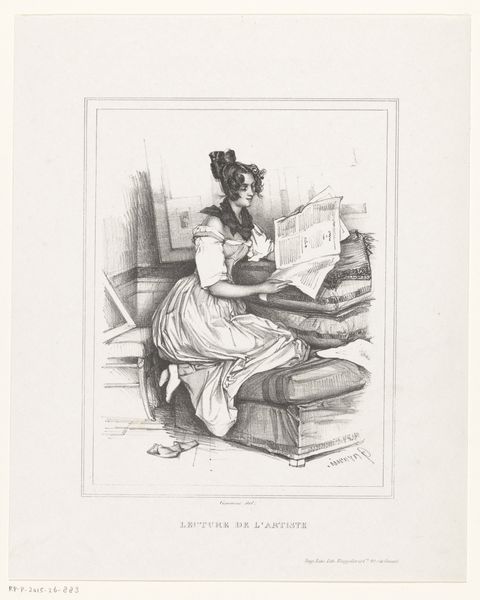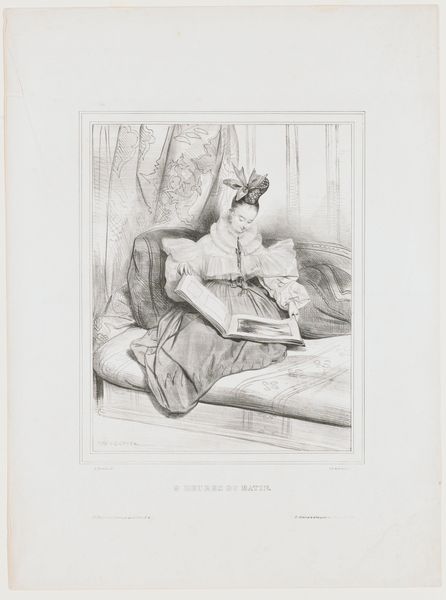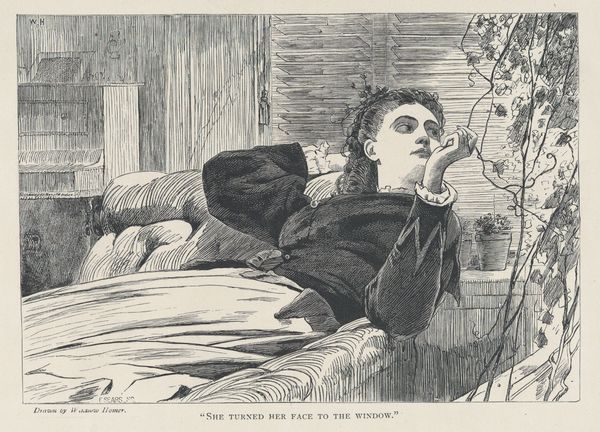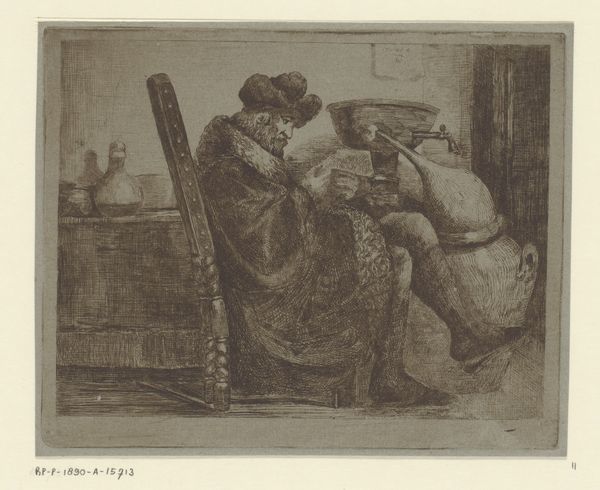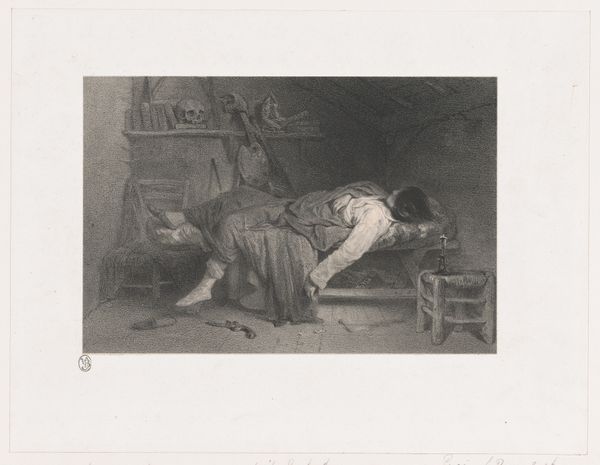
drawing, lithograph, print, paper, ink
#
portrait
#
drawing
#
lithograph
# print
#
caricature
#
paper
#
ink
#
romanticism
#
genre-painting
#
cartoon carciture
Dimensions: height 244 mm, width 320 mm
Copyright: Rijks Museum: Open Domain
Editor: Here we have "Vrouw in kamerjas met een serinette," or "Woman in a Dressing Gown with a Bird Organ," a lithograph by Paul Gavarni, created in 1839. The subject seems to be completely enraptured by whatever is coming from this little machine, she almost looks… lifeless. How do you read this image? Curator: It's a fascinating portrayal of leisure and social commentary. Gavarni, active during a period of significant social upheaval, often used his art to critique the emerging bourgeois class. The serinette, a mechanical bird organ, would have been a fashionable novelty, a symbol of status. But, is Gavarni celebrating its presence or questioning it? Editor: I see what you mean, It’s as if he’s suggesting her involvement with it is mindless or superficial… She almost blends with the bed behind her. Is he criticizing the upper class's detachment from, you know, real life? Curator: Precisely. Look at how her dishevelled state contrasts with the supposed refinement of the serinette. Consider how printed imagery circulated widely, making such commentary accessible to a broad audience. He might be challenging the perceived value of such frivolous pastimes and their potential to dull the senses, politically, spiritually, culturally… What do you think that accessibility meant for social discourse? Editor: That makes a lot of sense. Prints like these were maybe early forms of political cartoons, influencing public opinion through satire… so it’s like an early form of social media? Curator: Yes, dissemination and influence! What Gavarni is doing here speaks volumes about the power of images to shape perceptions and reflect anxieties around social class. Editor: I’ll never look at caricatures the same way! It's clear Gavarni's commentary extends far beyond the surface level of simple satire. Curator: Indeed. This lithograph encourages us to question the values and behaviours perpetuated by the symbols of wealth and status within a specific historical context. It reminds us that art is not just about aesthetics, but about engaging with the world around us.
Comments
No comments
Be the first to comment and join the conversation on the ultimate creative platform.
